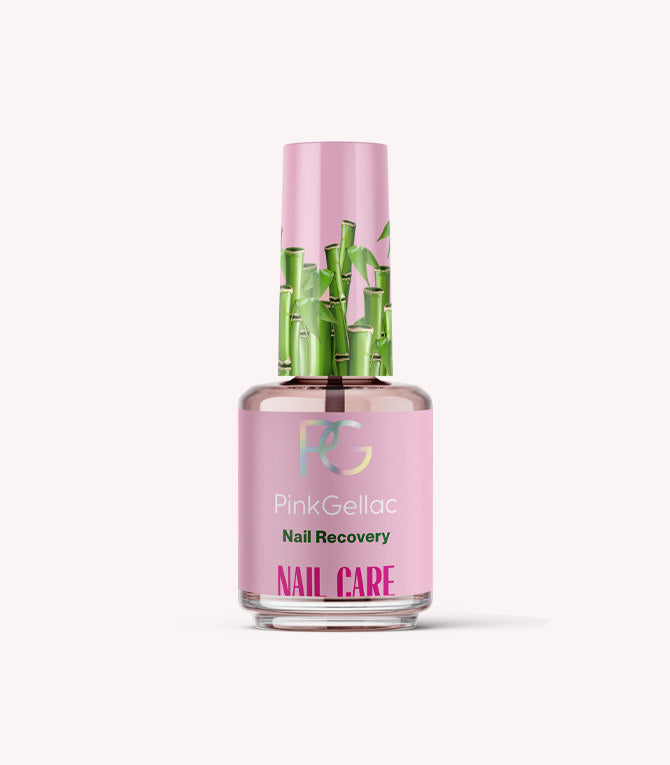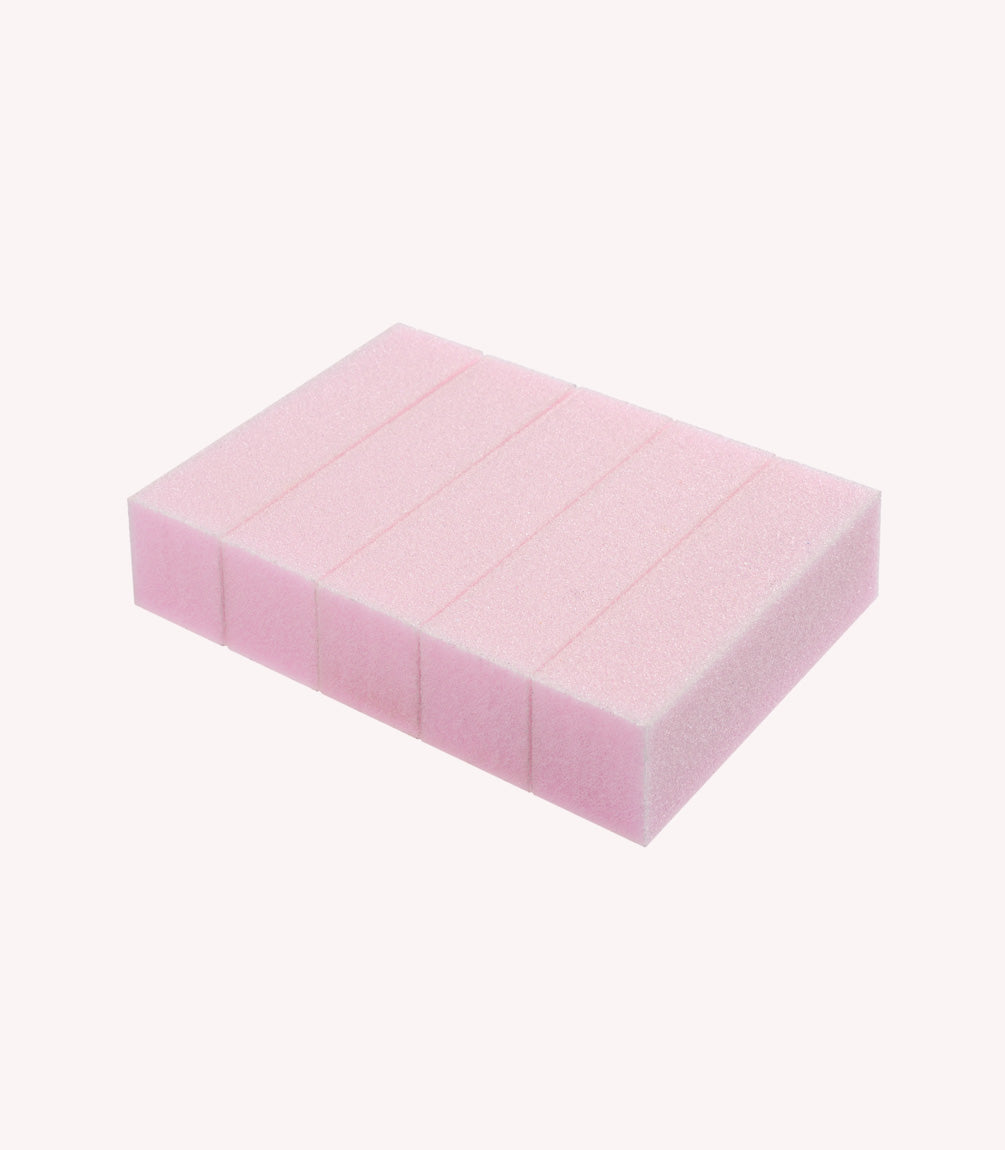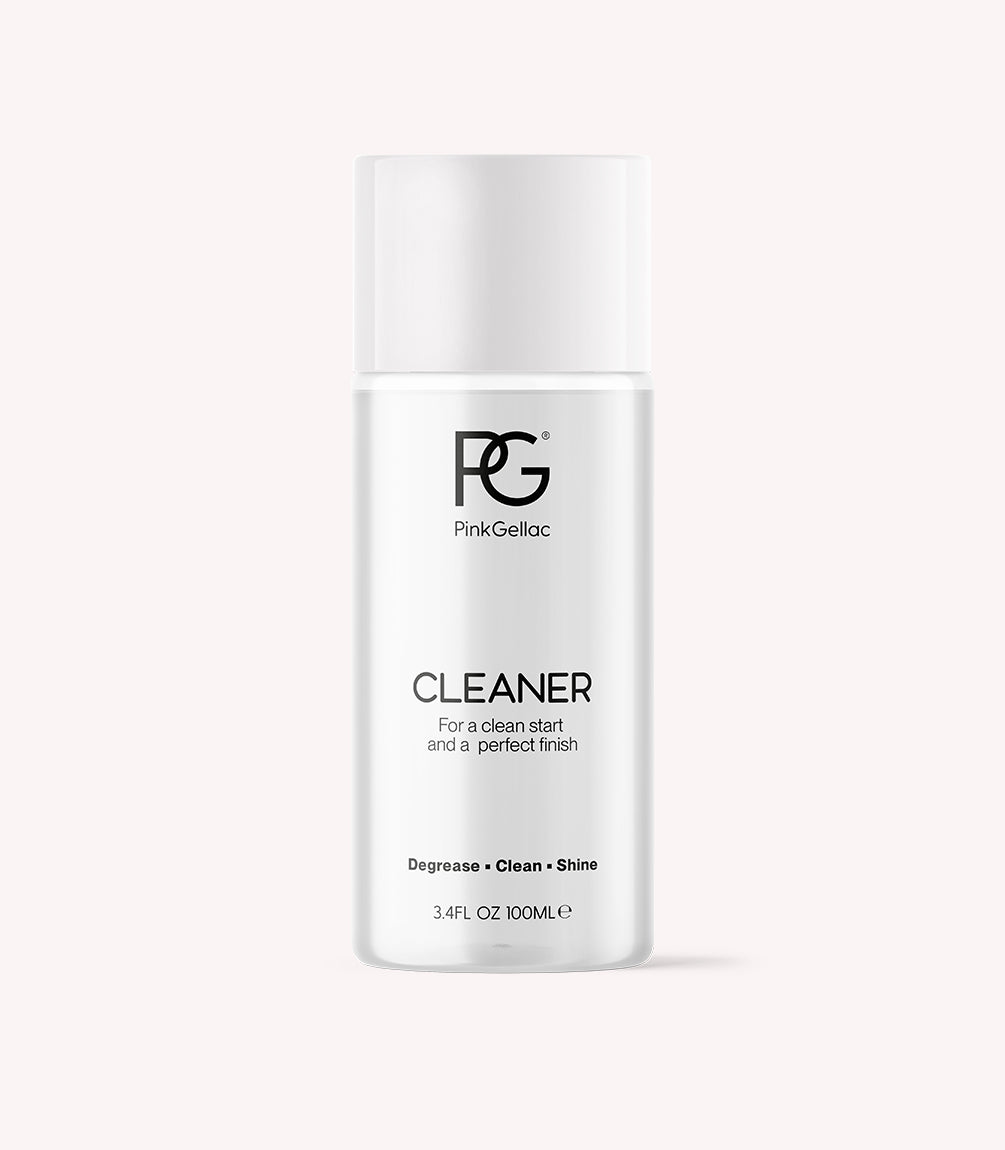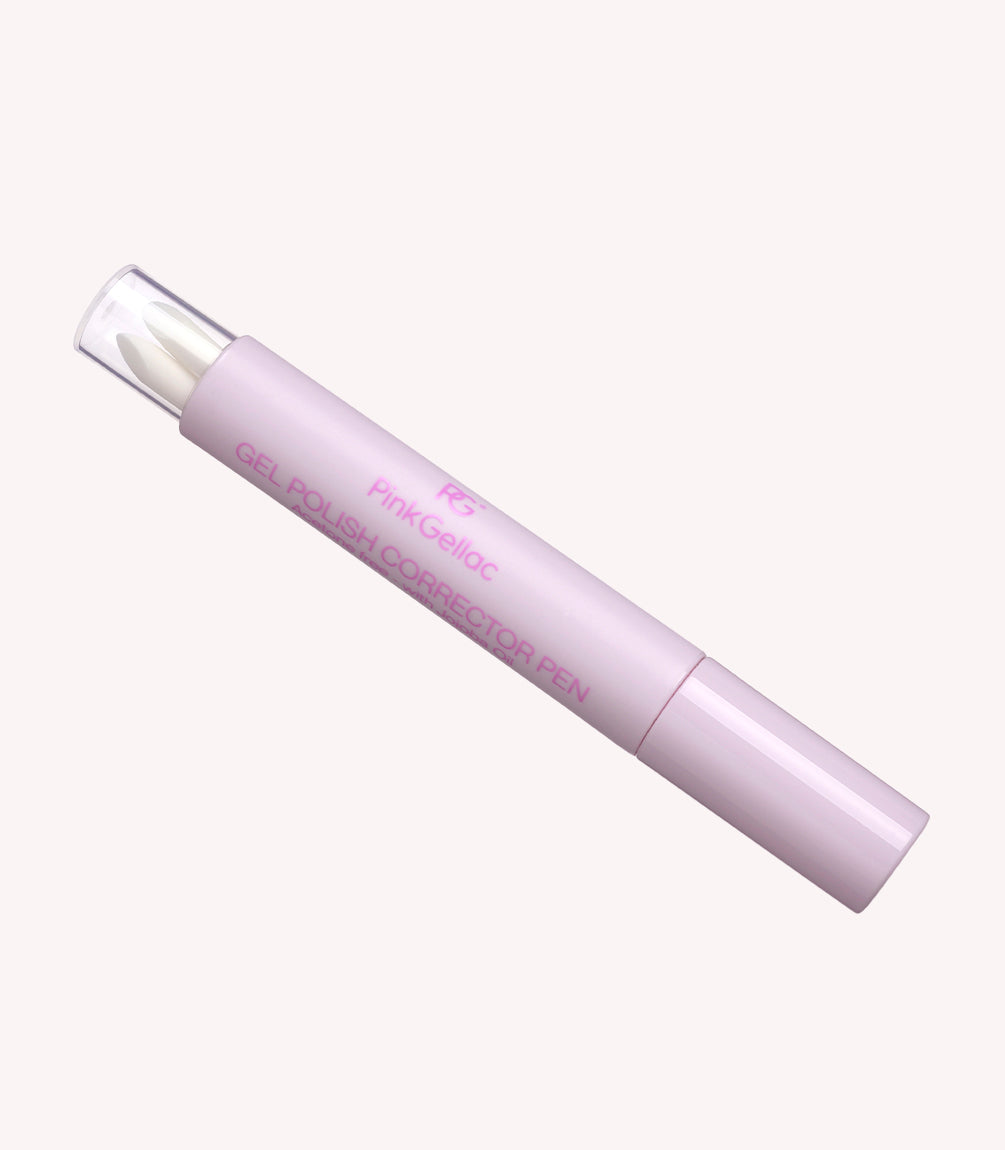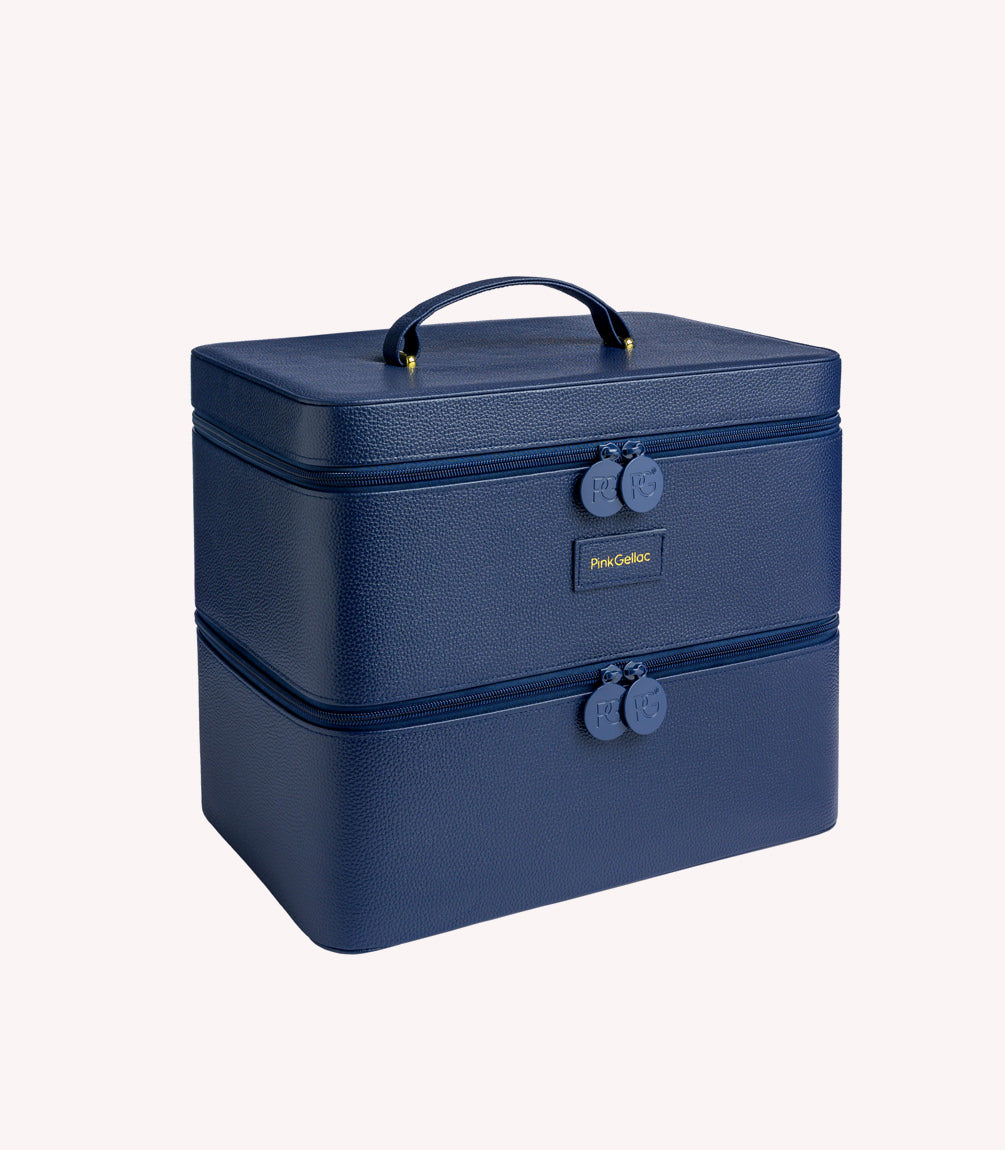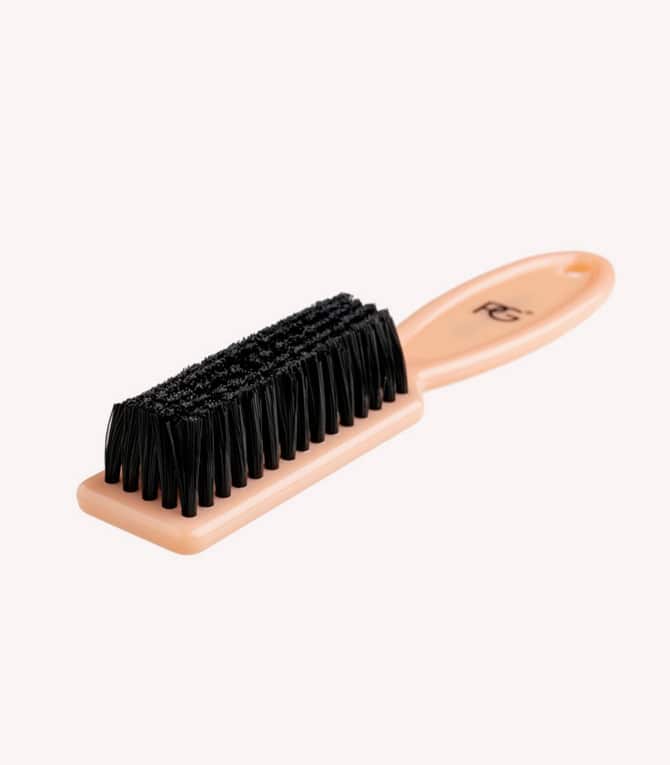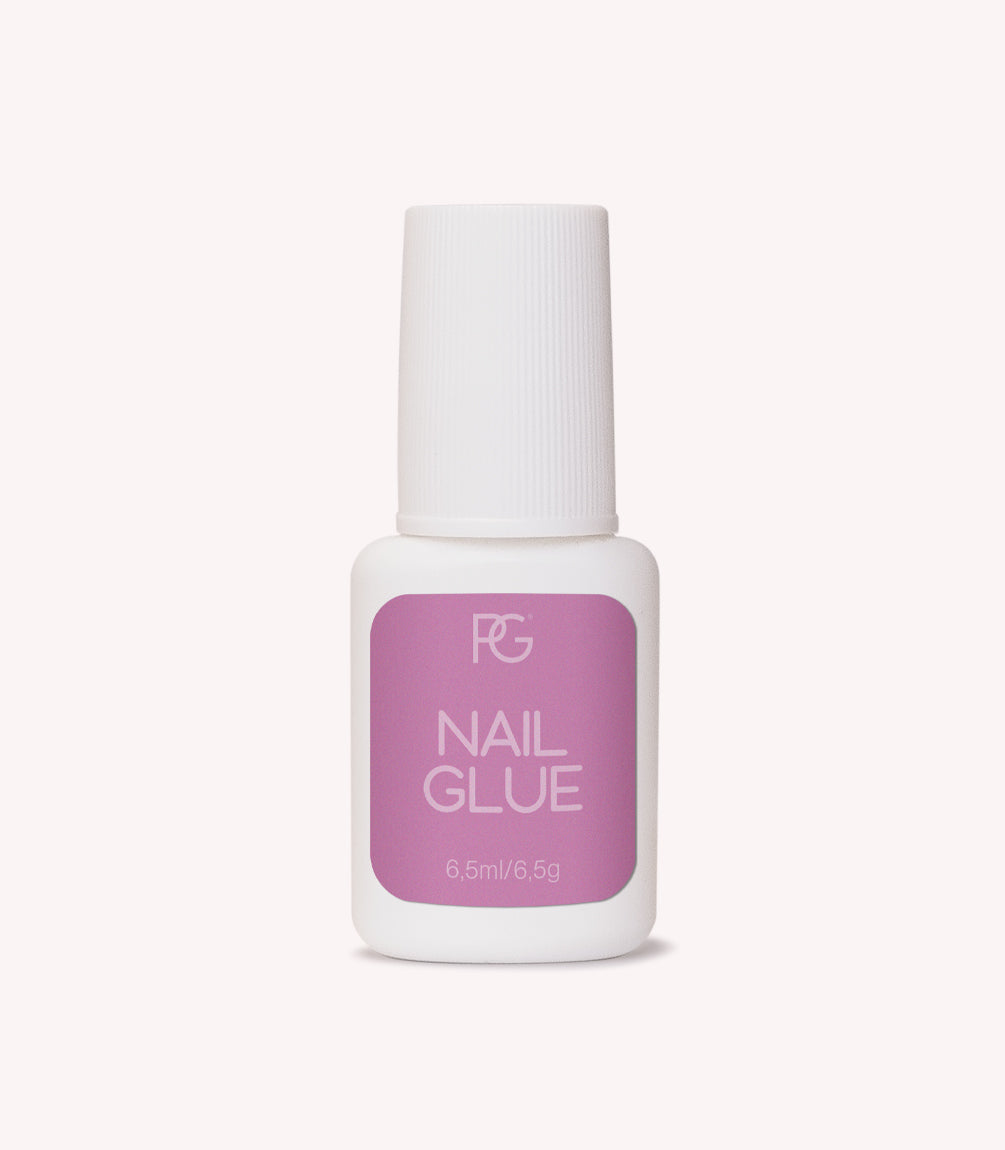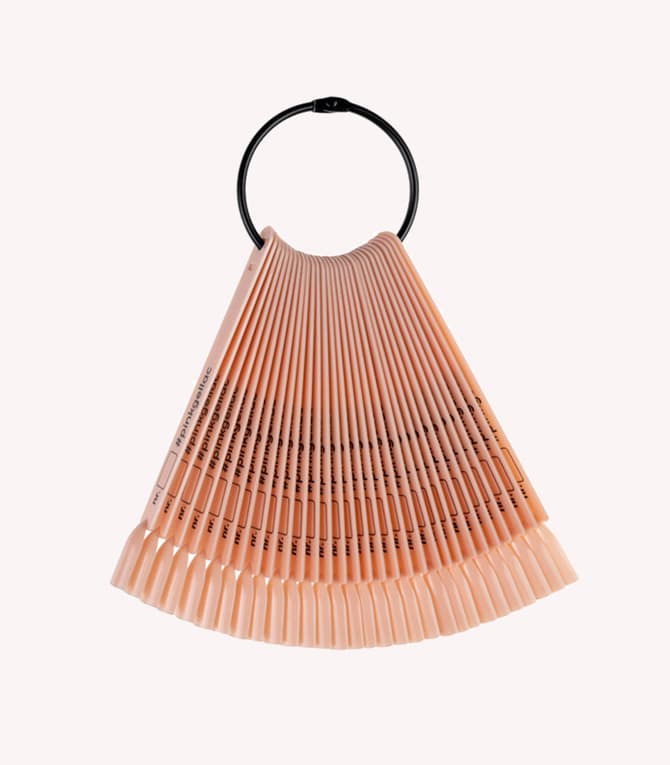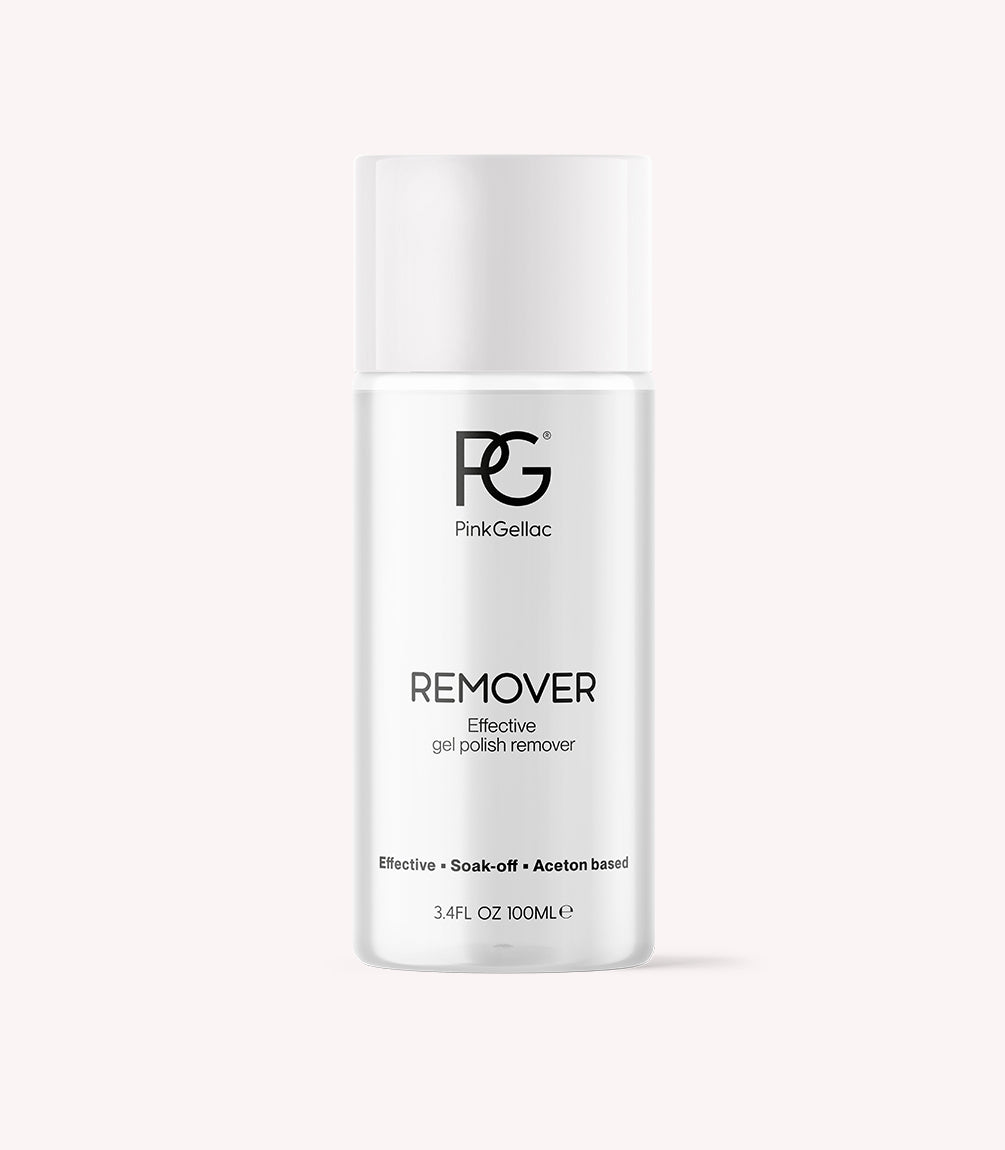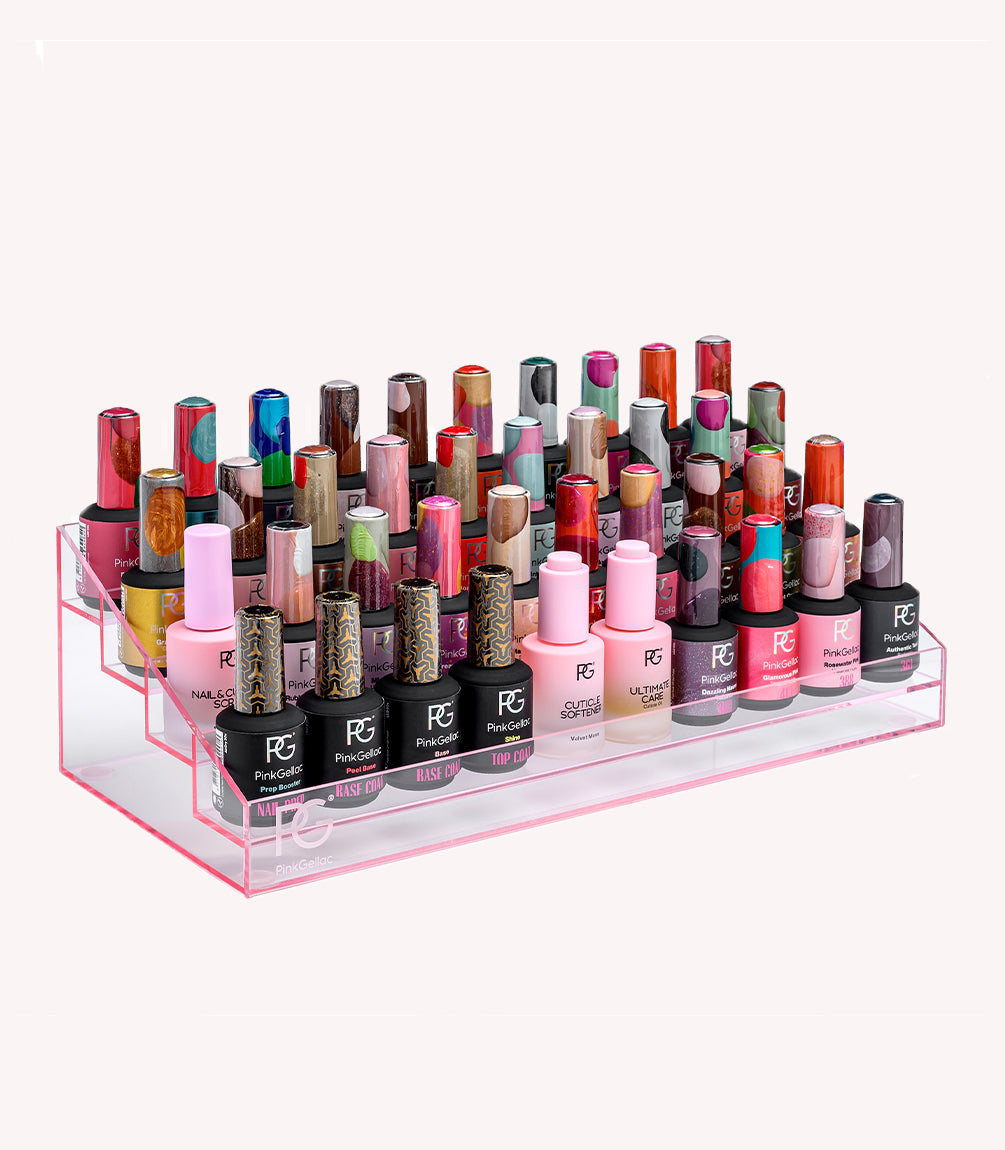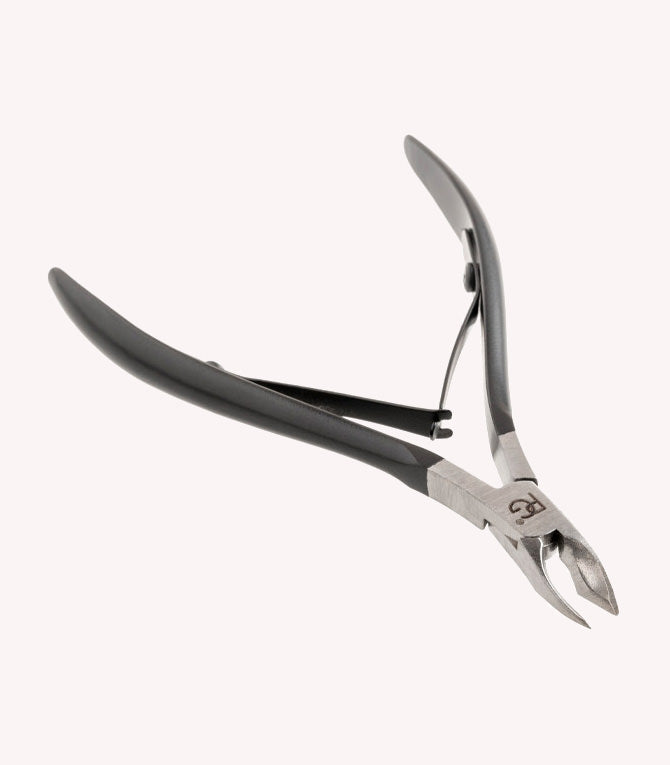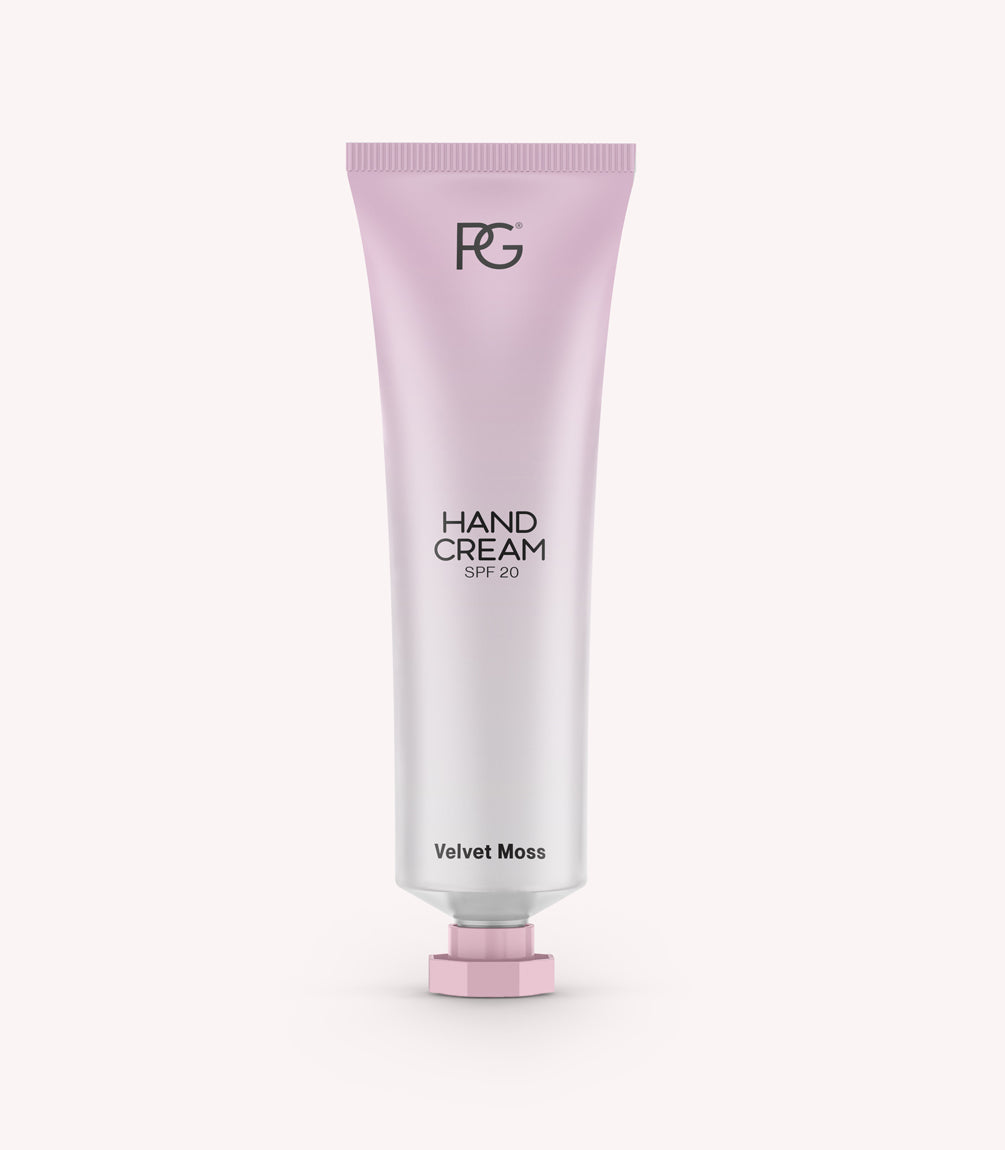HEMA-Free
Pink Gellac's range is HEMA-Free and does not contain HEMA and Di-HEMA acrylates. On this page, you will find all information about our HEMA-Free formula. We also share information about the acrylates HEMA and Di-Hema; acrylates that are no longer found in our products, but are often talked about when it comes to allergies caused by gel nail polish
Safe and Quality Products
Pink Gellac stands out for the quality of its products. All our gel polish is made from high-quality ingredients and comply with all required laws and regulations in the EU. It is not for no reason that we have already welcomed over 1,000,000 customers and that our rating on trustpilot is consistently high with a score of 4.6 on a 5-point scale (based on 33,000 reviews).
Ingredients Di-HEMA and HEMA
Gel polish is a technology that was developed decades ago and at the time was mainly done in nail salons. The products used often contain Di-HEMA and HEMA acrylates (Di- HEMA and HEMA for short) for strong adhesion to the nail. For companies selling gel polish in the European Union, there is a maximum allowed quantity to comply with European laws and regulations, and these products can officially only be sold to professionals. When used according to the safety instructions and with a lamp compatible with the polish, the risk of build up of such an allergy are considered to be low. Unfortunately, from countries outside the EU, products often enter the Netherlands that contain concentrations many times higher than allowed. They are also offered on websites without proper warnings and at extremely low prices.
The disadvantage of adding these ingredients in such high concentrations to gel polish (and without proper warnings) is that frequent contact with the skin can cause an allergy to HEMA-acrylic to build up. Of course, the chances of building up this allergy are higher when polish with higher concentrations of HEMA and Di-HEMA are used.
Pink Gellac has already started transitioning to a new formula without these substances in 2021. We call this gel polish HEMA-Free. We have now fully switched to this formula and can state that we no longer sell products containing HEMA or Di-HEMA on our website www.pinkgellac.com and in our boutiques.
FAQ
Is Pink Gellac gel polish safe?
Using Pink Gellac is safe; of course it is important that you follow the user instructions. We always advise to prevent the gel polish from touching the skin and to choose the lamp that is of the same brand as the polish you are using; this way you can be sure that the polish has cured properly. Pink Gellac is produced in the European Union and complies with the European Cosmetics Regulation (1223/2009/EC); this gives you the assurance that the products are safe and approved for the European market. There is sometimes media coverage about the risks of acrylate allergies from using gel polish and you may have questions about this.
Gel nail polish always requires acrylates; so it is important that the gel polish you buy contains acrylates that are safe. The acrylates used in Pink Gellac's formula are known to be much safer acrylates compared to the well-known HEMA acrylate, and the use of these acrylates is of course in line with guidelines from the Dutch and European laws and regulations. We therefore call this range HEMA-Free. Nevertheless, even with these acrylates, if there is frequent skin contact through inaccurate use, an allergy can be built up in exceptional cases. There is no such risk if skin contact is avoided and the polish is properly cured using the right lamp.
More information on safe use can be found here.
I have heard reports in the media about severe allergic reactions, does this also apply to Pink Gellac?
We have also read these reports. The severe reactions spoken of are generally caused by products containing extremely high concentrations of HEMA, often from countries where the processing of ingredients is not regulated. The products sold by Pink Gellac today do not contain this ingredient; we call this HEMA-Free.
We advise consumers not to buy products from countries and companies that do not comply with European laws and regulations and to choose HEMA-Free to reduce the risks of allergy. However, it is of course important to use the products as prescribed - only polish your nails (not your skin) and try to avoid skin contact. Also, always use the LED or UV lamp recommended with the product so that all acrylates in the gel polish cure properly and do not come into contact with your skin later. Pink Gellac's LED lamps comply with strict European laws and regulations and have been developed to cure our gel polish optimally.
The media attention will hopefully help consumers become more aware of what type of product they are buying and how to use gel nail polish safely.
How do I know if a product complies with laws and regulations?
Gel polish and other acrylic nail products are best bought from a European-based manufacturer, importer or distributor to ensure compliance with European legislation. The brand should be able to tell you whether they comply with the European Cosmetics Regulation (1223/2009/EC); this is also often stated on the product's website. At Pink Gellac, all our products comply with these laws and regulations.
I suspect I have an allergy, how do I find out?
A contact allergy can cause annoying symptoms such as redness, swelling and itching. When these symptoms occur and you suspect gel polish to be the cause, it is important to remove the gel polish as soon as possible. If the gel polish is the cause of the complaints, the complaints will quickly diminish. If the gel polish is the cause of your allergic reaction, the symptoms will get worse.
If you suspect an allergy to acrylates from gel polish or other cosmetics, always contact your doctor for a referral. The same acrylates can also be used in medical and dental applications, e.g. dental fillings or artificial knees. So it is very important that an allergy is professionally diagnosed and can be recorded in the patient file. Most often, it concerns an allergy to HEMA Acrylates. If a HEMA acrylate allergy has been diagnosed, you might be able to use Pink Gellac's HEMA-free range. You will obviously have to test this and again, the user instructions should be followed and skin contact should be avoided.
I'm going to a nail salon – how do I ensure that the products used are safe?
We advise customers who have their gel nails done at a nail salon to enquire about what products are used and verify that the products used comply with European laws and regulations (European Cosmetics Regulation (1223/2009/EC)). The employee in the salon should be able to tell you this.
If you have a sensitivity to HEMA, or want to rule out a possible future HEMA allergy, we advise you to request a HEMA-free treatment. If you choose a salon that uses Pink Gellac, you can rest assured that all products comply with European laws and regulations. And of course, we also offer salons our entire HEMA-Free range so that they can also offer a HEMA-Free treatment in their salons.
I have Pink Gellac products at home, how do I know if these are HEMA-free?
If the ingredients on the packaging do not list Di-HEMA and HEMA (hydroxyethyl methacrylate), they are HEMA-free. If you can no longer read the ingredients or the ingredient declaration is no longer with the product, please contact our customer service; they can tell you whether this product is HEMA-Free or not.
I am a nail stylist - how can I prevent an acrylic allergy?
As a professional nail stylist, you spend hours a day in your salon and there is therefore a risk that your skin comes into frequent contact with acrylates. We therefore advise nail technicians to wear nitrile gloves with every treatment - PVC, latex or polyethylene gloves are not recommended as they can let acrylates through. Good ventilation in the working area with exhaust air through a grille in the worktop is also required.
